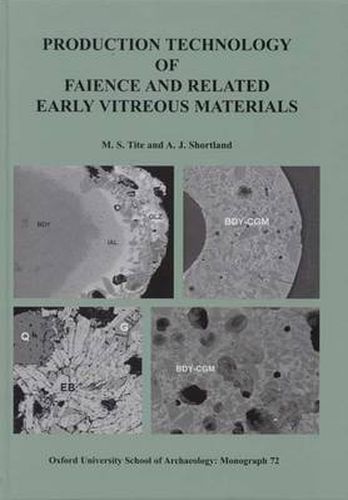Readings Newsletter
Become a Readings Member to make your shopping experience even easier.
Sign in or sign up for free!
You’re not far away from qualifying for FREE standard shipping within Australia
You’ve qualified for FREE standard shipping within Australia
The cart is loading…






The aim of this monograph is to bring together in a single volume the results of many years of research into production technology of early vitreous materials. The vitreous materials considered are glazed steatite, faience, Egyptian blue and green frits, and glazed pottery and bricks from Egypt, the Near East, the Indus Valley and Europe spanning the period from their beginnings in the 5th millennium BC through to the Roman period. For each group of material, the emphasis is on presenting the available analytical and microstructural data which are then interpreted to provide information on the raw materials and methods of fabrication employed in their production. Where appropriate, the raw materials used in the production of these materials are compared with those used in the production of contemporary glass. By bringing together data for such a wide range of materials, geographical regions and chronological periods, similarities and differences in production technology are identified, and the pattern of technological discovery, adoption, choice and transfer is thus revealed.
$9.00 standard shipping within Australia
FREE standard shipping within Australia for orders over $100.00
Express & International shipping calculated at checkout
The aim of this monograph is to bring together in a single volume the results of many years of research into production technology of early vitreous materials. The vitreous materials considered are glazed steatite, faience, Egyptian blue and green frits, and glazed pottery and bricks from Egypt, the Near East, the Indus Valley and Europe spanning the period from their beginnings in the 5th millennium BC through to the Roman period. For each group of material, the emphasis is on presenting the available analytical and microstructural data which are then interpreted to provide information on the raw materials and methods of fabrication employed in their production. Where appropriate, the raw materials used in the production of these materials are compared with those used in the production of contemporary glass. By bringing together data for such a wide range of materials, geographical regions and chronological periods, similarities and differences in production technology are identified, and the pattern of technological discovery, adoption, choice and transfer is thus revealed.